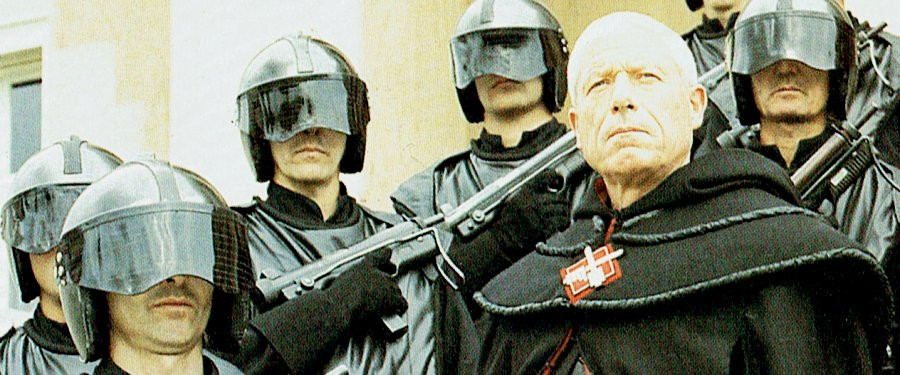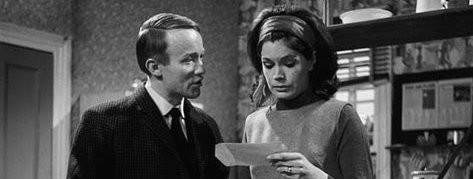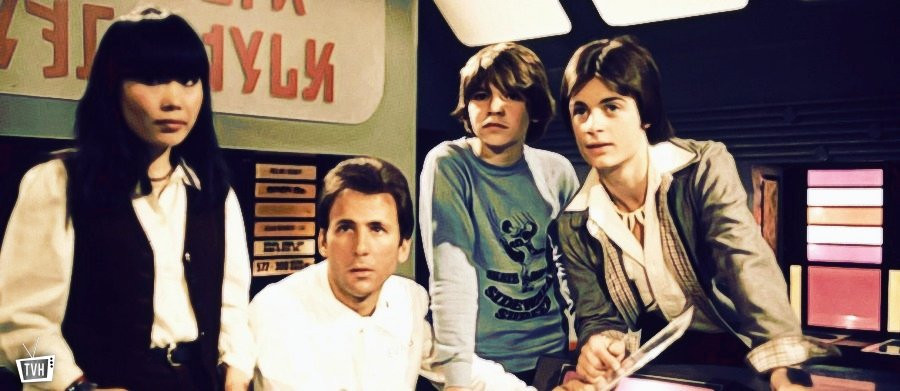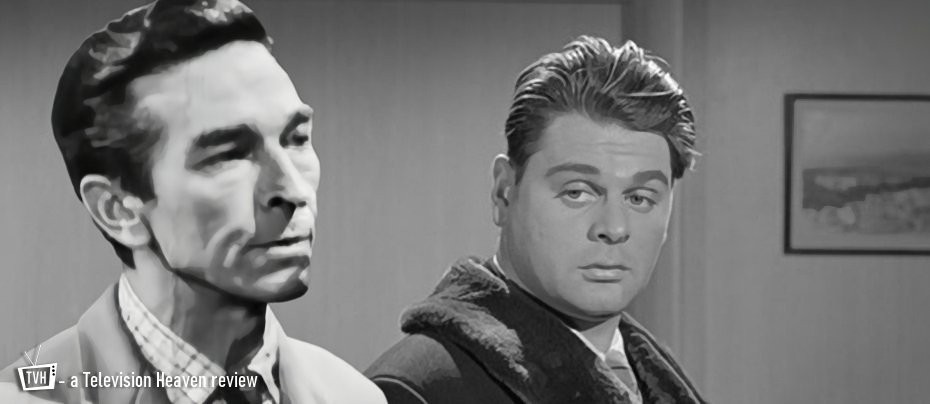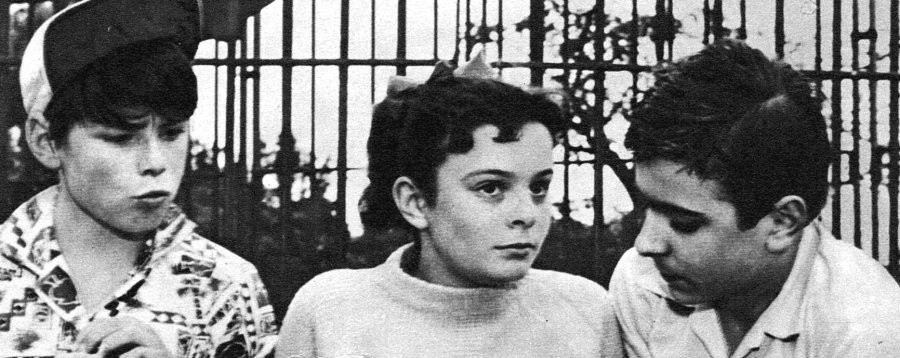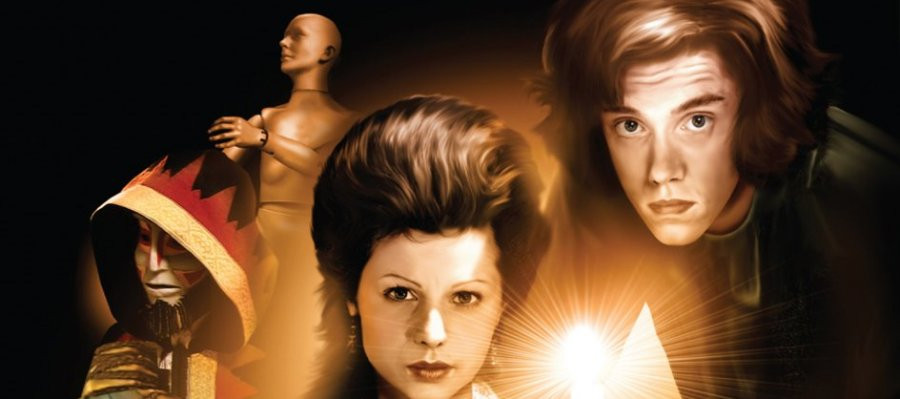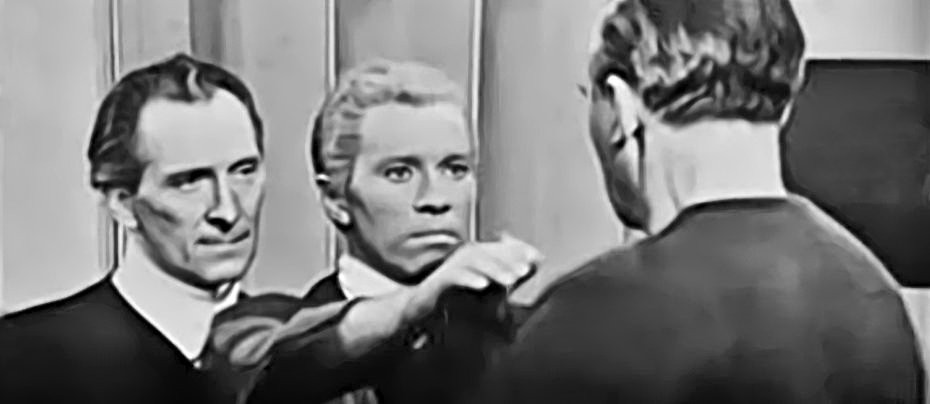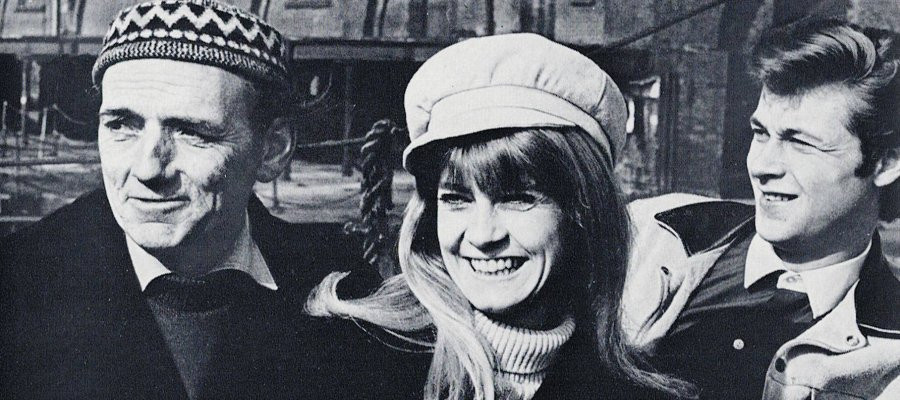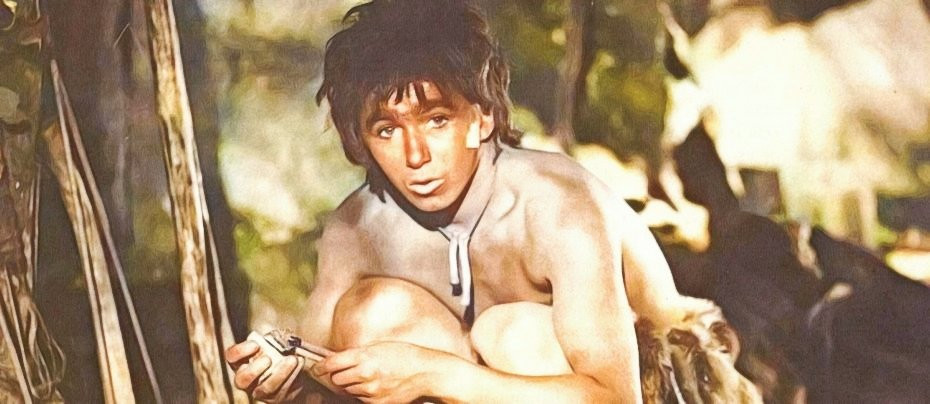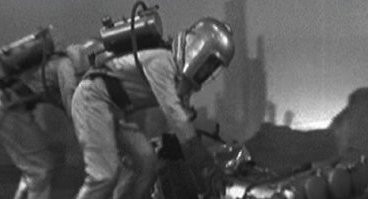
Pathfinders To Mars and Beyond
"We didn't travel sixty million miles through space just to be trapped by a load of primitive spinach."
Following the grand success of Pathfinders in Space, which in some regions of the UK managed over 50% of the afternoon audience, Sydney Newman immediately set writers Malcolm Hulke and Eric Paice to work on a sequel. While ostensibly two separate serials, Pathfinders to Mars and Pathfinders to Venus, at six and eight episodes respectively, form a single fourteen-part narrative tracking a long journey through space for a set cast of characters. Pathfinders in Space and its predecessor Target Lunahad focussed heavily on plausible science in their storytelling. For the follow-up story, a somewhat looser approach was taken with the hard truths of physics. That's not to say the story was completely fantastical, far from it; however, Mars and Venusdeveloped the series in a more adventurous direction. There are some impressive moments of what was, at the time, state-of-the-art space science. Most notably, towards the end of Pathfinders to Mars, the crew cut their potentially terminally long journey down by undertaking a slingshot around the sun, utilising the star's gravity to accelerate their spaceship. This is precisely the kind of manoeuvre that modern spacecraft use to accelerate to the velocities required to allow exploration of the outer Solar System.
Among the discussions concerning the realistic effects of solar radiation, radio waves, the inertia of spacecraft and their payloads, more and more speculation was introduced. The popular phenomenon of UFOs was discussed, preparing the way for alien life in the Solar System. Even when the scripts were written in 1960, the possibility of life on Mars was looking less and less likely, although Hulke and Paice restrict their speculation to organisms that would be plausible according to the science of the time. Venus, on the other hand, was at the time almost entirely a speculative environment. Swathed in an opaque cloud layer, the Venusian surface was a complete mystery until the first radar mapping began in 1961, and the Mariner 2 managed the first successful Venus observation mission in 1962, all some months after the writing of Pathfinders to Venus. Perhaps most significantly, Yuri Gagarin made the first manned spaceflight on 12th April 1961, the day of recording of "The Valley of the Monsters," the seventh episode of Pathfinders to Venus. With only two episodes left to broadcast, Pathfinders had been firmly placed in the realm of science fiction, rather than plausible speculation.
The new storyline is a direct sequel to Pathfinders in Space, with Gerald Flood once again taking the central role as the heroic journalist-cum-astronaut Conway Henderson. Professor Wedgwood is no longer part of the set-up, although the space mission remains his brainchild. This time though, there's no particularly logical reason that Henderson becomes the mission leader, although I supposed experience counts for something. Henderson completes his transition from a supporting character to a stiff-upper-lipped hero, and as part and parcel of this he gains a love interest. Pamela Barney returns as Professor Mary Meadows, a character who was quite peripheral in the previous serial and barely exchanged a word with Henderson. The scientist's role is increased in this story however, and she becomes a vital part of the mission. It's gratifying to see a female in a major scientist role in a drama of this kind, even if she is defined in a somewhat clichéd way as the mother of the team, Meadows has a certain charm that makes the character very likeable. On their journey together, Meadows and Henderson experience a subtle, chaste and rather sweet romance.
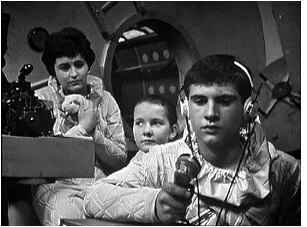
If Meadows and Henderson are the parents of the group, it follows that there are also children. The absurdity of children travelling on a groundbreaking space mission is no easier to swallow than before, but it's a central part of the programme and it's best to just accept it. It's certainly more feasible than their once again being allowed to take their Guinea pig along. Returning from the previous serial is Stewart Guidotti as Geoffrey Wedgwood, teenaged son of the professor. This time, however, his younger siblings are omitted, and instead Hester Cameron is introduced as Margaret Henderson, Conway's niece. Highly precocious and with an accent that could cut crystal, Margaret has the potential to be extremely irritating, and although there are times when she becomes a bit too much, Cameron is a likeable enough actress to retain viewer support.
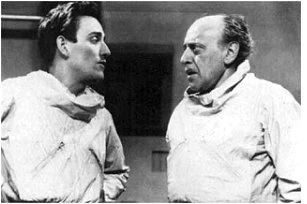
With the leads becoming more straightforwardly heroic, and the stories becoming more traditionally adventure-based, there was one final element to put into place. Setting the serials apart from their predecessors is the inclusion of a villainous character, one Harcourt Brown. Although not completely malicious, Brown is fanatical and amoral in the extreme, willing to lie and cheat his way onto the MR4 mission in order to prove his own crackpot theories of alien life. It takes a certain suspension of disbelief to accept that he could make his way onto the mission by taking the place of a noted scientist, but he manages it with little difficulty, the deception going undiscovered until after the rocketship is on its way to the Moon. It is Brown who alters the ship's flightpath in order to send it to Mars. Brown is played with aplomb by George Coulouris, a respected actor on both the big and small screens, most noted at the time for his appearance in Citizen Kanetwenty years earlier. Coulouris would go on performing well into the 1980s, working again with Sydney Newman three years later on Doctor Who, and memorably appearing in A Clockwork Orangein 1971. Adept at playing villains, Coulouris gives Brown a certain charisma that makes him a sympathetic character, even as he endangers his unwilling comrades' lives. He's occasionally quite compassionate and often likeable, which is probably the explanation for why they don't leave him on Mars when they have the chance.
It is extremely unlikely that a mission designed for reaching the Moon could make it all the way to Mars, but nonetheless, they manage it. The vast increase in distance travelled is at least acknowledged, with a full six weeks passing between episodes three and four of Pathfinders to Mars. What an awkward and uncomfortable six weeks they must have been. Upon finally landing on the Red Planet, the travellers waste no time in looking for water to replace their exhausted supplies. The presence of groundwater on Mars seems perhaps less unlikely now than it would have in the 1960s. Nonetheless, Mars is accurately portrayed as a freezing desert, and the set design is truly impressive. The spacesuits were redesigned between serials to make the cast more comfortable, and they also look more realistic. Along with the new spacecraft sets, it's a distinctly well-designed production. Once on Mars, expectations are subverted and a cold, hard dose of reality is served up, for Brown's Martian civilisation is nowhere to be seen. The only life on the planet is a form of extraterrestrial lichen, and it's with this that designers' ambition finally outstrips their means. Rapidly growing lichen isn't the most promising of alien threats, and the organism looks like exactly what it is: inflatable plastic tubing and sheeting. There's simply nothing that Flood and Barney can do to make their struggles with the lichen look anything other than risible, though they certainly give it all they've got. Production demands were catching up with the series in more ways than one by this stage, with the final three episodes of Mars broadcast live. Given these trying conditions, the cast cope admirably, in circumstances that must have been particularly tough on the child actors.
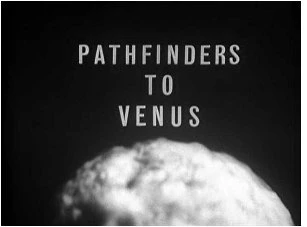
Travel between planets is a difficult and carefully calculated business, and the narrow window that is provided by correct planetary alignment provides the impetus for the final episodes. The aforementioned slingshot effect saves the MR4 crew from a lingering death in space. Nonetheless, they would take in one more destination before returning to Earth. After six weeks' break, the series returned with Pathfinders to Venus, which saw the ship diverted to the cloudy planet to rescue a lost American astronaut on a secret mission. With free reign to imagine whatever Venusian environment they so chose, Hulke and Paice decided on a fairly conservative mixture of rocky terrain and jungle. A tropical environment was a common enough assumption for the Venusian surface in early scientific and fantastical literature, with the planet often being imagined as like a prehistoric version of Earth, in contrast to the now dead planet Mars. Hulke and Paice run with this idea, taking full advantage of the adventure serial stylings it allows. As with Pathfinders in Space, their grasp of palaeontology is somewhat flawed, although much of what is discussed by the characters, regarding Neanderthals and early man, is in keeping with the understandings of the time. The crew must deal not only with extraterrestrial threats but also Brown's renewed fanaticism for the search for intelligent alien life, and the occasionally antagonistic but mostly noble Captain Wilson, played by Canadian actor Graydon Gould (perhaps best known as the voice of Mike Mercury in the children's series Supercar).
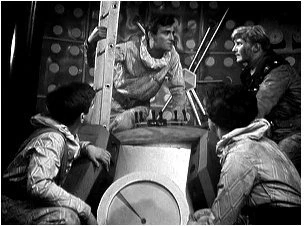
There is, however, an uncomfortably imperialist tone to the serial during its final few episodes. Brown's beliefs are not entirely wrong, and it turns out that Venus is home to intelligent life. The travellers befriend a young aboriginal played by Brigid Skemp, whom they named Kiki after her most commonly used word. Blacked up and dressed in clichéd native-wear, Skemp is actually very adept in the role, making her character very likeable and believable in spite of her limited dialogue. Despite her clear intelligence, however, all the adult characters save for Brown refer to Kiki as "it," and display considerable arrogance and superior attitudes to her and her primitive people. It's the astronaut Wilson who is the worst, determined to inform his superiors of this unspoiled new land, something that Brown realises will lead to the colonisation of Venus and the extermination of Kiki's people. It's then that one realises that Hulke and Paice are taking an anti-imperialist stance in their script, attacking the British and American methods of expansion during the last days of empire. It is baffling, however, that they would choose a character hitherto portrayed as at worst villainous and at best delusional to express their views of forward-thinking and acceptance. One wonders how many adults watched the serial nodding along with Henderson and Wilson, while their children, hopefully, took more notice of Brown's philosophy.
The final episodes of Venus go in a peculiar direction, due to a decision by Newman to allow his programme to be used in an experiment. In an investigation into children's viewing habits, the episodes were screened in front of an audience of children of various ages, and deliberate errors were put into the production. While a caption appears at the end of each episode so affected, it makes for a strange viewing experience, as deliberately contradictory dialogue is at times very noticeable. While not an error, it is also hard to imagine that the children in the audience would be overly impressed by the various "monster shots" used in the adventure. With little budget left for anything as elaborate as a working puppet or costume, the inclusion of dinosaurs and pterodactyls was achieved by inserting stock footage from the 1955 Czechoslovakian film Cesta do Praveku, or Journey to the Beginning of Time. Although amusing in their own way, they do not sit well with the rest of the production. Also, the team identify a predatory dinosaur as a Tyrannosaurus when it is clearly a Ceratosaurus. Whether this mistake was deliberate or not is unknown.
Pathfinders to Venus was to be the final serial in the series that had begun with Target Luna. During its rapid production and broadcast it had achieved very healthy ratings and responses. One episode, "The Hostage" in Pathfinders to Mars, aired on Christmas Day 1960 and was second only in viewing figures to the Queen's Speech. This was not to be the end of the Pathfinders story, however. Both Flood and Guidotti would return for Plateau of Fear, an adventure serial that would begin another extended story that continued in City Beneath the Sea and Secret Beneath the Seain 1961-2. The following year, producer Sydney Newman would move to the BBC. With the lessons he had learned from the making of the series, and the feedback from the children's group for the experimental episodes (which he described as "humiliating, funny and illuminating") Newman would go on to create the most successful children's fantasy series in history: Doctor Who. Little-remembered as Pathfinders is now, its legacy lives on.
Published on February 21st, 2019. Written by Daniel Tessier (March 2015) for Television Heaven.


